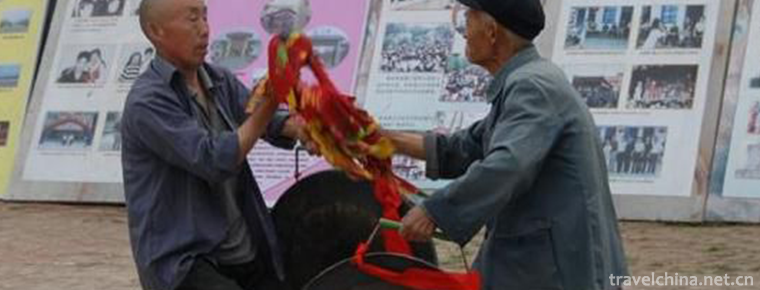2018-12-17

- By ChinaWiki.net
- Chinese Edition
- 2020-12-18
Historical evolution of Yibin
In the Qin Dynasty, Bodao County, the first county-level administrative organization, was set up in Yibin City. Bodao city is the city of Yibin.
In the sixth year of Jianyuan (135 B.C.), Emperor Wu of Han Dynasty established Qianwei County, and at the beginning of the county administration, he (the west of Zunyi City, Guizhou Province) was established. In the first year of the first Yuan Dynasty of emperor Zhao of the Han Dynasty (86bc), Bodao city was transferred to Qianwei County, belonging to the History Department of Yizhou Prefecture in the Western Han Dynasty. Wang Mang established the "new" Dynasty in the first year (9th year) of the founding of the people's Republic of China. Qianwei county was renamed xishunjun county and Bodao county was renamed Bozhi. The county governance and leading County remained unchanged until the first year (23rd year) of the reform.
In the 12th year of Jianwu in the Eastern Han Dynasty (36th year), Qianwei County moved to Wuyang (Jiangkou Town, Pengshan County). Bodao county is still set up.
During the reign of Emperor Wu of the Southern Qi Dynasty (483-493), Qianwei County moved back to Bodao city from Wuyang. Until the second year of Jingming in the Northern Wei Dynasty (501), Bodao was occupied by "Yirong" and the county was abandoned. In 544, Emperor Wu of Liang Dynasty established Rongzhou in Bodao city after pacifying Yirong. The Northern Zhou Dynasty occupied Rongzhou in the first year of the Ming Dynasty (557 A.D.), and in the third year of Baoding (563), Waijiang county (governing Yibin City) was established in Bodao County, Rongzhou.
The Sui Dynasty replaced the Northern Zhou Dynasty in 581 ad. Yibin was occupied and Rongzhou was still established. In the third year of Daye of Sui Dynasty (607), Bodao city became the county of Qianwei for the third time until the early Tang Dynasty.
In 618, the first year of Wude, Emperor Gaozu of the Tang Dynasty, abolished sui qian as a county and established Rongzhou again. In the Tang Dynasty, Rongzhou was established for a long time until the end of the Tang Dynasty, except that it was renamed Nanxi County from the first year of Tianbao (742) to the first year of Qianyuan (758). In the period from the first year of Wude of Tang Dynasty to the sixth year of Zhenguan (618-632), it was in Fuxikou on the opposite bank of Lizhuang town in Cuiping District; the sixth year of Zhenguan to the first year of Changqing (632-821) was in Sanjiangkou of Yibin City; from the first year of Changqing to the first year of Huichang (821-841), it was in Fuxikou on the opposite bank of Lizhuang town. In 841, Rongzhou was located in Bodao city. In 842, due to the flood of Jinsha River, the state government moved from Sanjiangkou to jiuzhouba on the North Bank of Minjiang River until the end of Tang Dynasty.
In the Five Dynasties, Rongzhou and Bodao counties were still set up in the former Shu and the latter Shu, and the prefecture and county administration remained unchanged in Jiangbei.
In 965, the Song Dynasty occupied Rongzhou, which was still governed by Rongzhou, and Bodao county was still governed by jiuzhouba in Jiangbei. In 1114, Rongzhou was renamed Xuzhou and Bodao county was renamed Yibin County. Jiangbei Jiuzhou dam is still set up in the prefecture and county. In 1267, in the third year of Xianchun of Song Dynasty, Guo Hanjie, the pacification envoy of Xuzhou, built Denggao mountain city in Baishawan street of Cuiping District, on the side of West Baita Road, Baishawan street, Cuiping District, Song Dynasty, and Yibin County of Song Dynasty moved to Denggao mountain city.
In 1275, Guo Hanjie lowered yuan. The next year, the yuan army destroyed the mountain city of Denggao and moved the counties of Xuzhou and Yibin back to the old town of Sanjiangkou. In 1281, Xuzhou was upgraded to Xuzhou Road, and Sanjiangkou city was established by Xuzhou Road and Yibin County. In addition, there were Xuanfu envoys of barbarians in Xunan and other places in the city, which were in charge of Xuzhou, Mahu Second Road, lawsuits of prefectures and counties, and 1000 household offices. Mingyuzhen, the leader of the red scarf army, became emperor in Chongqing in 1363, the 23rd year of Zhizheng reign of the Yuan Dynasty. After the occupation of Yibin, the military and civilian Xuanfu envoys of Xuzhou were set up in Yibin City of Sanjiangkou to manage the city area, and Yibin County was still established in the city.
In the fourth year of Hongwu in the Ming Dynasty (1371), the Daxia regime was destroyed in the Ming Dynasty. According to the Ming Dynasty, there were Xuzhou Road and Yibin County, and Sanjiangkou city was still set up in the county. In the sixth year of Hongwu in Ming Dynasty (1373), Xuzhou road was renamed as Xuzhou capital. The government and Yibin County still set up Sanjiangkou urban area, and in the same year, Xuzhou capital stone city was built. In 1644, Zhang Xianzhong occupied Yibin City. After that, the Southern Ming army and the Qing army repeatedly fought for Yibin.
In 1659 (the 16th year of Shunzhi reign of the Qing Dynasty), the Qing Dynasty called "the whole territory of xudi" and exercised its ruling power over Xuzhou Prefecture. On December 5 of the Gregorian calendar in the third year of Xuantong of the Qing Dynasty (1911), the anti Qing "army of protecting the road" forced the governor of Xuzhou Prefecture of the Qing Dynasty to establish an army government in southern Sichuan, and the rule of the Qing Dynasty in Yibin ended.
In the second year of the Republic of China (1913), Xuzhou government was abolished, and Yibin County and its original counties were under the jurisdiction of Xiachuan Nandao (changed to Yongning road the following year).
In March of the 23rd year of the Republic of China (1935), 18 administrative supervision districts were set up in Sichuan Province, and Sanjiangkou urban area was set up in the Sixth District of Sichuan Province and Yibin County.
On December 11, 1949, Yibin was liberated. On December 20, the Yibin military control committee of the Chinese people's Liberation Army was established.
On January 1, 1950, the South Sichuan administrative office of the southwest administrative region was established. On January 2, Yibin special area in southern Sichuan was established. The office of the regional Commissioner's office is located in Sanjiangkou urban area.
On September 1, 1952, Yibin District in southern Sichuan was renamed as Yibin District of Sichuan Province.
In 1954, Yibin District Commissioner's office of Sichuan Province was renamed as Yibin Commissioner's office of Sichuan Province.
In April 1967, Yibin District of Sichuan Province was renamed Yibin area. The district commissioner's office, regional Revolutionary Committee and regional administrative office all set up Sanjiangkou urban area.
In 1968, Yibin regional Revolutionary Committee was established to replace the Yibin Commissioner's office.
In April 1978, Yibin Revolutionary Committee was changed into Yibin administrative office.
On October 5, 1996, the State Council approved the withdrawal of Yibin to establish a city.
On February 24, 1997, the people's Government of Yibin City, Sichuan Province was officially established, and the municipal government set up Sanjiangkou urban area.
On July 13, 1998, the municipal government moved from Zhongshan street to Shunan Avenue on the south bank.
In March 1957, Pingshan County was divided into Yibin district from Leshan district. Up to now, 10 counties (districts) under the jurisdiction of the city have been assigned to Yibin.
In July 1960, Luzhou district was incorporated into Yibin district. After the merger, Yibin district has two cities and 16 counties. Yibin City of Sanjiangkou is still under the jurisdiction of Yibin Commissioner's office of Sichuan Province.
In April 1978, Longchang County was divided into Neijiang area from Yibin area.
In March 1983, Fushun County was divided into Zigong City from Yibin district; in June of the same year, Yibin district and Luzhou City were set up separately, and the cities and counties under the former Luzhou special area were successively divided. By May 1985, Yibin district had one city and nine counties.
In October 1996, Yibin district was abolished and Yibin City was established under the jurisdiction of Sichuan Province. The original county-level Yibin City was changed into Cuiping District of Yibin City, which has 1 District and 9 counties.
On March 17, 2011, Nanxi County was abolished and Nanxi District of Yibin City was established.
In July 2018, Yibin County was abolished and Xuzhou District of Yibin City was established.
Ask a Question
Your email address will not be published.



0 Questions